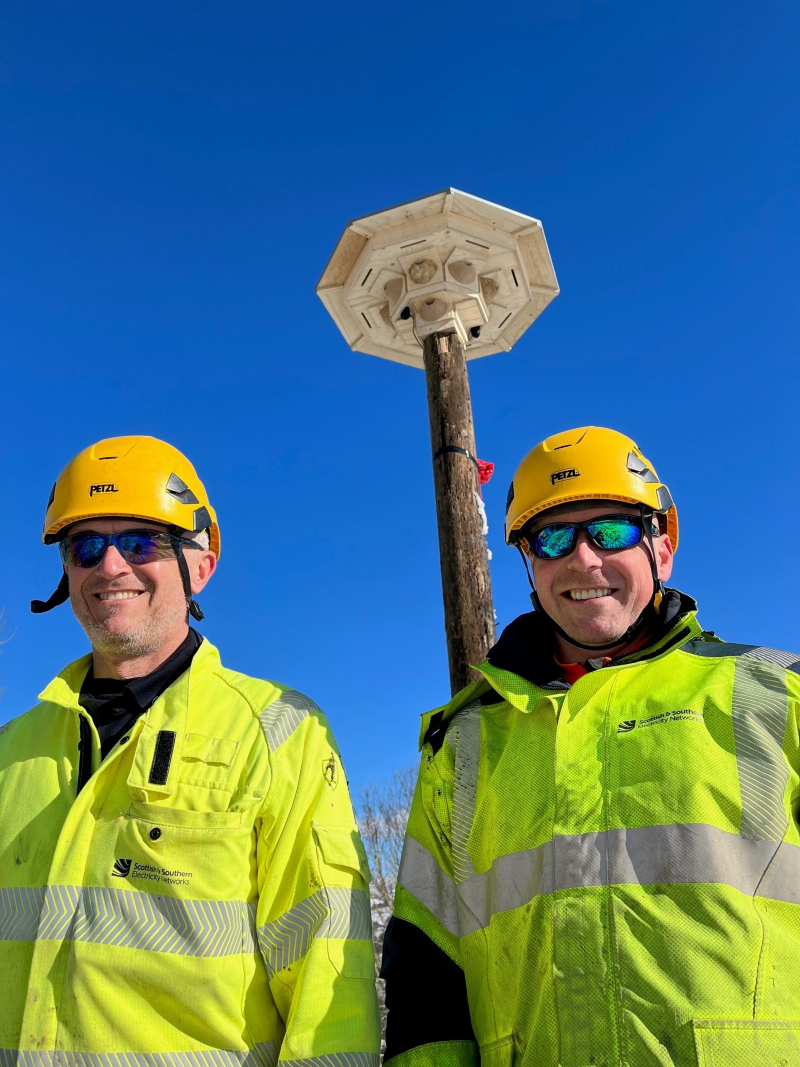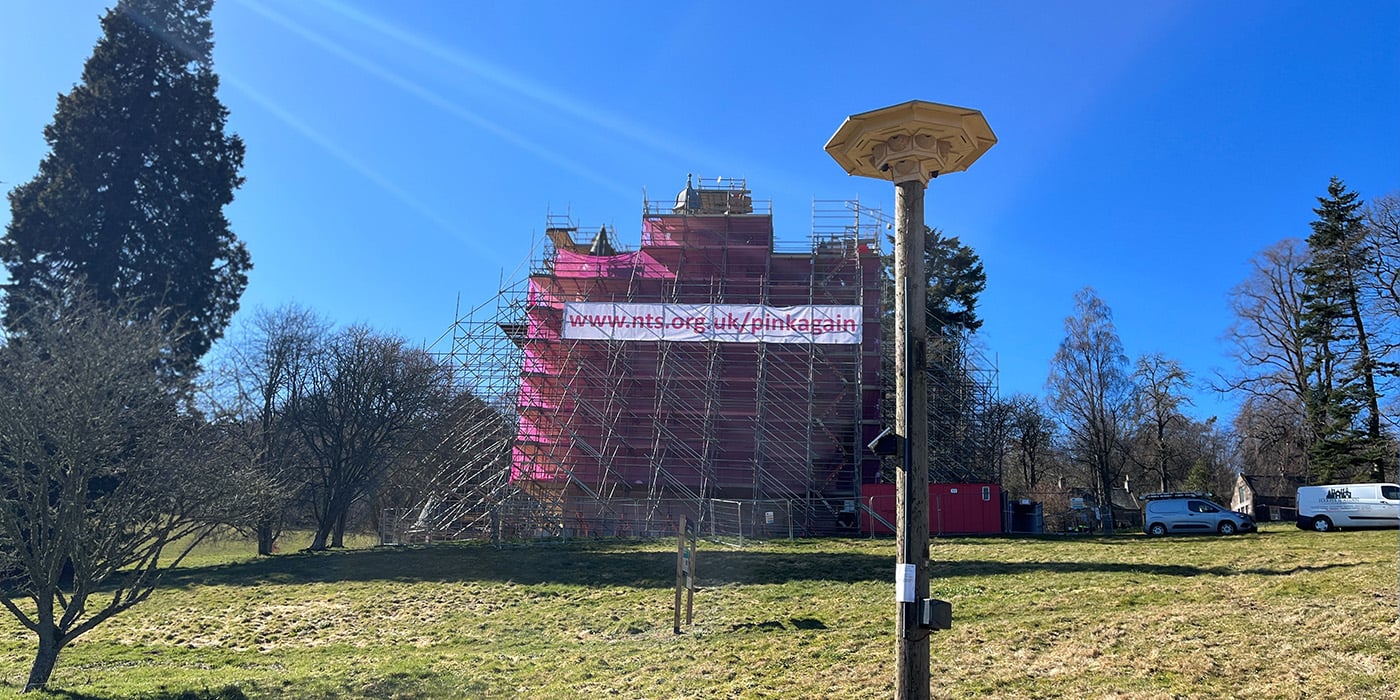House martins can often be found living close to humans, building their nests on the side of buildings - and in the case of Craigievar Castle in Aberdeenshire – they even ventured as far as some of the window frames.
With the National Trust for Scotland (the castle’s owners) currently carrying out a conservation programme of the site (including a new coat of the building’s famous pink hue), the worry was that even with strategic access gaps in the scaffolding, the house martins may have been discouraged from building new nests, move on elsewhere and never return.
And this is where SSEN Distribution’s team rose to the occasion and provided one of their wooden poles - the type normally used to carry the lines that power local communities - upon which the new house martins’ deluxe home would be perched.
Robert Clark, one of the team from Aberdeen depot, tells us more:
“The NTS team at Craigievar knew me from previous works we’d carried out maintaining our electricity network on their grounds, and when they got in contact to ask about the possibility of a pole, I knew straight away that this was something our local team would be proud to support.”
“As well as providing the pole, we also brought along one of our JCBs to help us safely manoeuvre and install it on site– it was great to put our day-to-day skills and equipment to such good use, supporting not only a major local attraction but also helping the house martin community to thrive.”
As an innovative addition to the new house martin home, Cromar Future Group - a local STEM youth group - have produced an ‘audio caller’ with expert support; this will alert passing birds to the suitability of the nesting site by emitting a recording of a house martin’s call via small speakers.

Roddy Hamilton, one of the National Trust for Scotland’s rangers, said:
“The National Trust for Scotland is immensely grateful to SSEN Distribution for the installation of the pole they kindly donated, enabling us to have the new home ready for the house martins’ return migration.
“With the castle under wraps this summer, and with very restricted nesting opportunities on it because of our essential conservation project, the tower gives a nesting place to this red-listed species. By helping us, SSEN is not only providing habitat for a threatened species, but also inspiring a network of community-based nature-conservation volunteers.”
